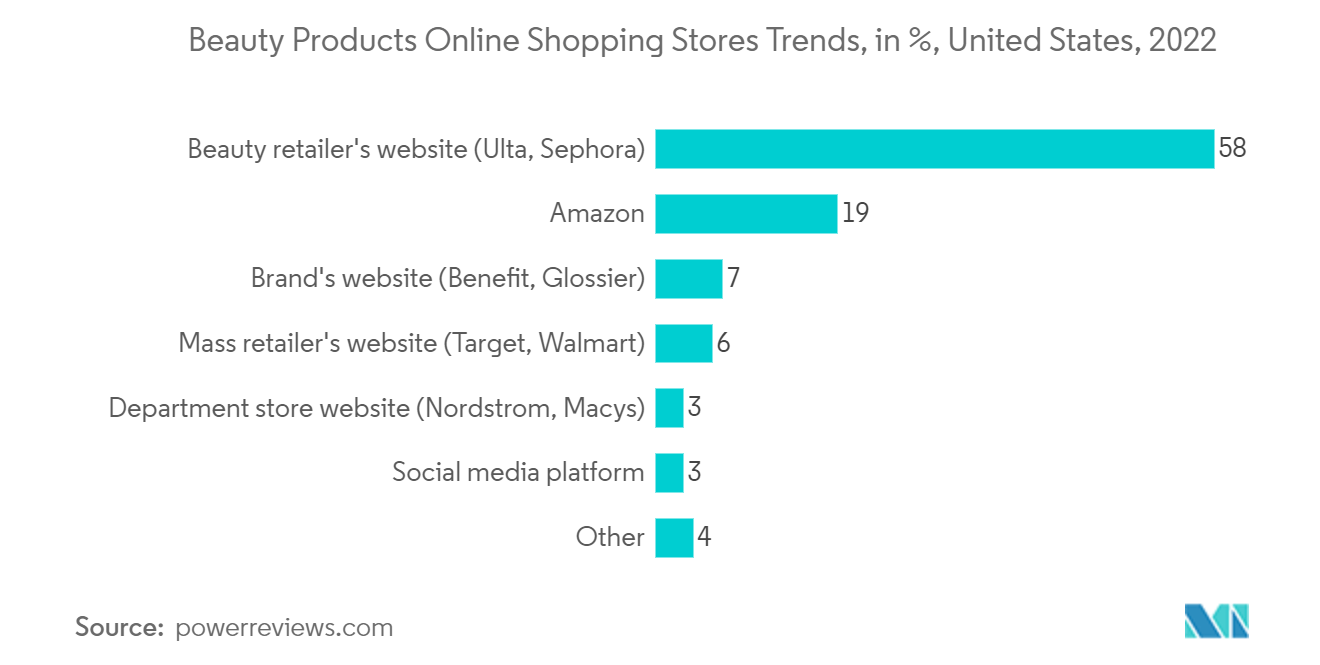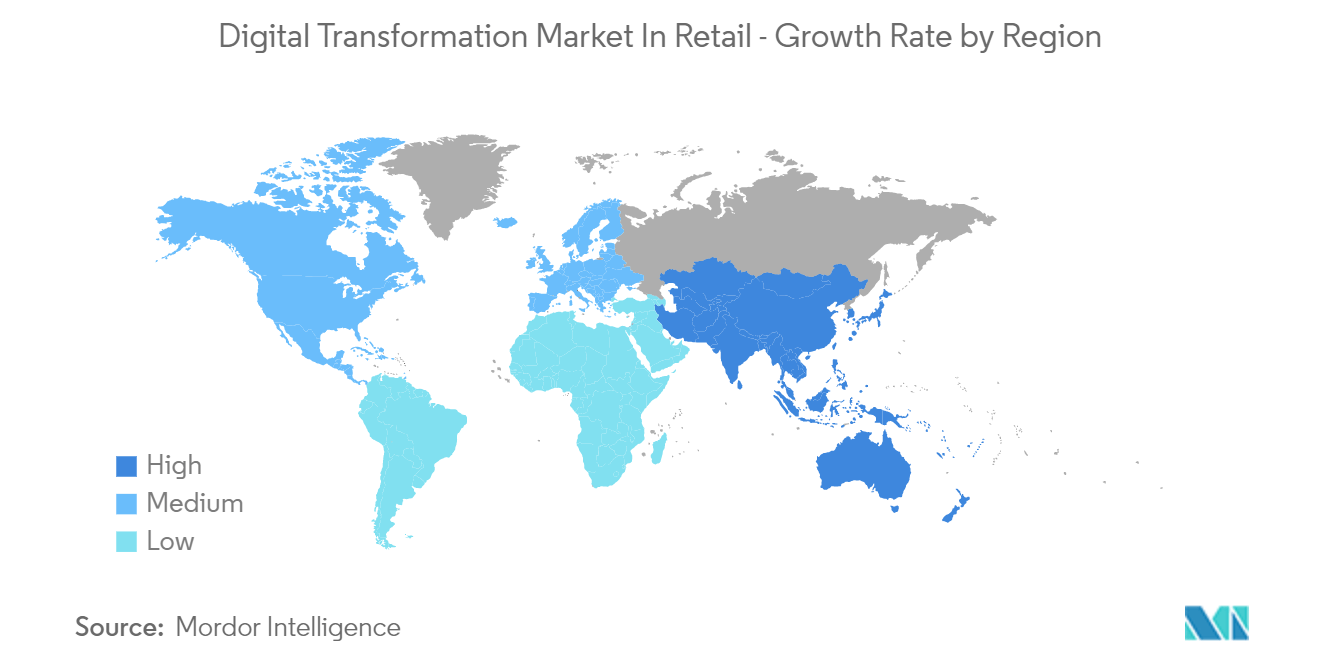Market Trends of Digital Transformation Industry In Retail
Beauty and Personal Care to Hold Significant Share
- The retail industry has witnessed tremendous growth in developed countries, such as China, the US, the UK, Japan, and Germany (followed by others), which are capturing the lion's share. People in the age group of 18-50 years are continuously engaged in shopping, thus contributing to the growth of the beauty and personal care segment. All these trends together offer a platform for growth for the beauty and personal care market.
- Consumers are able to pay more significant consideration to their hygiene, health, and appearance as their level of living has improved. As a result, the beauty and personal care goods industry is among the most popular destinations for them to purchase. This also gives personal care firms a better possibility to expand and capitalize on expanding market prospects.
- Owing to the increased penetration of technology among various age groups across the countries, the retail domain has become an integral part of cosmetic products. Free returns and comprehensive delivery options are focused on by retailers, adding value to the segment. Retail outlets continue to expand their product line (ranging from hair care, body care, face care, alcoholic perfumery, and hygiene products) with specifications and effective price comparisons being provided to the consumers.
- In recent years, e-commerce channels have changed the cosmetics sector. E-commerce websites typically provide additional deals, enticing people to buy recognized beauty goods online. Furthermore, these platforms provide convenience and a better buying experience, among other advantages.
- Growing internet usage and targeted marketing by businesses to reach a larger audience has supported category growth. Furthermore, significant discounts and offers made available by online platforms would promote the demand for beauty and personal care goods worldwide. Moreover, the rise of direct-to-consumer firms, the impact of digital influencers, and the increasing complexity of beauty technologies that gives product suggestions fuel e-commerce revenues of skin care and color cosmetics. Thus, the shift of consumer trends toward only shopping has compelled existing companies to adopt digital technologies to maintain a competitive edge.

North America Expected to have Highest Market Share
- North America is expected to garner a significant share due to the rapid increase in small and medium-sized enterprises and the continuous expansion of the service industry. Online shopping is growing in the region, with more and more retailers coming onto the internet to sell their products. To sustain the intense industry competition, many retailers seek to provide a personalized experience for which they employ retail analytics.
- The region's retail market is growing fast, with retail manufacturing accounting for more than 10% of the GDP in both the United States and Canada. The retail market in North America is one of the biggest, with Wal-Mart, Costco, Kroger, Home Depot, and Target originating in this region.
- Furthermore, the e-commerce industry in the region is seeing rapid expansion. As per the US Census Bureau, overall e-commerce retail revenues in North America climbed by 7.8% in the initial quarter of 2021 as opposed to the first quarter of 2020, reaching USD 1,581.4 billion. Customers prefer online shopping to in-store shopping because of the lower prices and buying convenience. This, in turn, has boosted investments in the retail industry's digital transformation, contributing to market growth.
- For instance, in September 2022, Cigniti Technologies, the world's foremost AI and IP-led Digital Verification and Digital Development services provider, deepened its engagement with a big American retailer by providing superior digital service to its consumers and advancing its digital aspirations.
- The United States contributes the most to developing the retail e-commerce industry and generates the most prospects for e-commerce retailing business participants, trailed by Mexico. The United States has an extensive infrastructure, a growing number of smartphone subscribers, online retailers, and other internet shopping sites. For instance, In January 2021, there were approximately 298.8 million web subscribers in the United States of America, based on Datareportal 2021. Between 2020 and 2021, the population of internet subscribers in the United States of America rose by 11 million (3.7%). This has boosted digital retail trends and is expected to increase over the forecast period.


